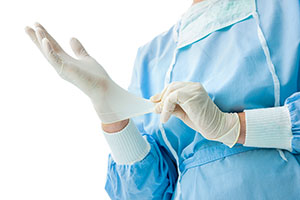In the busy reality of healthcare, even the most experienced staff can slip into habits and overlook the small, crucial steps that keep infections at bay. Barrier precautions aren’t just a technical requirement—they’re one of our best shields against the spread of illness, protecting our patients, our teams, and ourselves. Whether you’ve spent years in practice or you’re just starting out, it pays to revisit the basics of PPE and barrier routines. Sometimes, a quick refresher is all it takes to stop an outbreak in its tracks.
Why Barrier Precautions Still Matter
Hospital-acquired infections are still an everyday reality, no matter where you work. The CDC reminds us that on any given day, 1 in 31 hospital patients is dealing with at least one of these infections. It’s a stark number—but what it really means is that even small slips, like skipping hand hygiene “just this once” or grabbing the same gown twice, can give pathogens the upper hand.
That’s why barrier precautions are built into Standard Precautions—they’re not just rules, but everyday habits that protect anyone walking through our doors. Whether it’s blood, respiratory droplets, or body fluid, these steps keep us and our patients safe from infections that would otherwise spread unnoticed.
Standard vs. Transmission-Based Precautions
Let’s clear up a common point of confusion: Standard Precautions are the basics that apply to every patient—things like washing hands, using the right protective gear, covering coughs, handling sharps safely, and cleaning up as you go. Transmission-Based Precautions, on the other hand, are extra steps for patients with infections that can spread by contact, droplets, or through the air.
- Standard Precautions: These are the everyday rules for everyone, all the time.
- Transmission-Based Precautions: These are the add-ons when you’re dealing with something contagious—think extra protection and tighter routines.
Both types matter, and they only work when we follow each part carefully—no shortcuts.
PPE: Choosing the Right Equipment
Personal Protective Equipment is the part of barrier precautions that everyone recognizes, but piling on layers isn’t the answer—what matters is using the right gear for the right moment and knowing exactly how to put it to work.
- Gloves
- Pop on gloves any time you might come into contact with blood, body fluids, mucous membranes, or broken skin.
- Switch to a new pair between patients, and even between tasks on the same patient if you’re moving from a contaminated spot to a clean one.
- And remember gloves are great, but they’re no substitute for hand hygiene.
- Gowns
- Grab a gown when there’s a chance your clothes or skin could get soiled.
- Toss disposable gowns right after use and send reusable ones off to be cleaned properly.
- Masks, Respirators, and Eye Protection
- Surgical masks are your go-to for large droplets.
- Reach for an N95 respirator when you’re dealing with airborne bugs like TB.
- Don’t forget eye protection—goggles or a face shield—if there’s any risk of splashing or spraying.
Proper Donning and Doffing
Knowing how to put on and take off PPE is just as important as knowing when to wear it. Incorrect removal is one of the most common points of contamination.
Sequence for Donning PPE:
- Hand hygiene
- Gown
- Mask or respirator
- Goggles or face shield
- Gloves
Sequence for Doffing PPE:
- Gloves
- Goggles or face shield
- Gown
- Mask or respirator
- Hand hygiene
Tip: Remove PPE at the doorway or in a designated area to avoid spreading contaminants.
The Importance of Proper Hand Hygiene
Barrier precautions involve proper hand hygiene to reduce the risk of transmission. Alcohol-based hand rubs are used unless hands are visibly soiled, in which case soap and water are needed. For C. difficile cases, soap and water should always be used.
The “Five Moments for Hand Hygiene” (WHO) remain the gold standard:
- Before touching a patient
- Before clean/aseptic procedures
- After body fluid exposure risk
- After touching a patient
- After touching patient surroundings
Frequent Issues in Barrier Precautions
Even experienced clinicians can make errors when multitasking or under pressure. Common issues include:
- Wearing the same gloves between multiple patient interactions
- Partially removing PPE to speak with a colleague, then reusing it
- Allowing PPE to dangle from the neck or pocket “just in case”
- Skipping eye protection for “quick” procedures
The reality is that these shortcuts can—and do—lead to outbreaks. In busy settings, the challenge is balancing speed with thoroughness, but infection prevention protocols are designed to be efficient and protective when followed consistently.
Adapting Precautions for Different Settings
Barrier precautions aren’t one-size-fits-all; they must be adapted to your clinical environment:
- Hospital/Acute Care: Frequent changes in patient contact and acuity require rapid PPE changes and strict compliance with isolation protocols.
- Long-Term Care: Staff often care for the same residents daily, but familiarity should not lead to complacency.
- Home Health: Limited space and resources mean creative solutions, such as carrying portable PPE kits and ensuring waste disposal meets safety standards.
- Outpatient Clinics: Short visits still require full precautions—respiratory etiquette and surface disinfection are especially critical.
Reinforcing a Culture of Safety
Barrier precautions work best when they are part of the unit culture. That means:
- Visible leadership support for infection control
- Accessible PPE stations stocked and ready
- Ongoing education, including drills and refresher training
- Peer accountability—colleagues should feel empowered to remind each other about protocols
Final Takeaway
From the first pump of hand sanitizer to the final tie of a gown, barrier precautions are not just “extra steps”—they are integral to patient safety and our own protection. In a healthcare environment where pathogens evolve and patient vulnerability is high; these measures remain our frontline defense.
Taking a few minutes to review PPE guidelines, practice proper donning and doffing, and commit to consistent hand hygiene can prevent days, weeks, or even months of complications for patients and healthcare teams alike.

